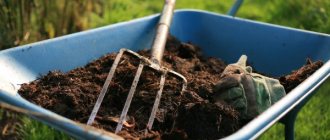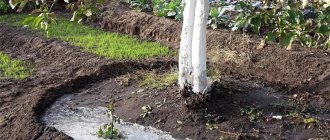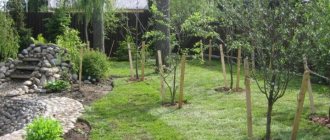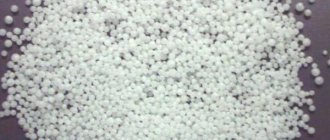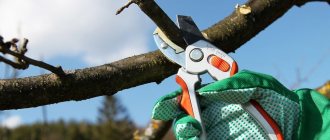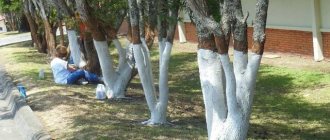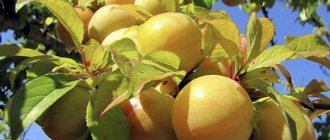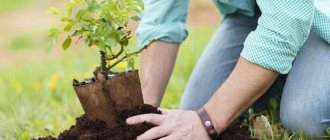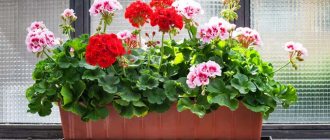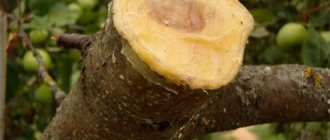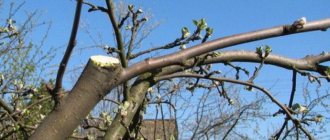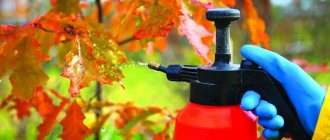About the importance of spring feeding
During the growing season, plants absorb many nutrients from the soil. The soil, losing fertility, requires constant fertilizing. It is especially important to provide nutrition in the spring, when plants need to rapidly increase their green mass, grow and develop.
Thanks to spring feeding:
- plant growth is activated;
- productivity increases;
- the taste of fruits improves;
- plants look more attractive;
- the leaves look healthy, rich green, without spots or paleness;
- immunity increases.
How and how to fertilize a flower garden in spring
For those who care not only about “berries”, but also flowers, the issue of feeding the flower garden both in greenhouse conditions and in open ground in the spring is of great importance. Perennial flowers such as peonies and periwinkles especially need micro and macro elements after winter.
Almost all ornamental flowering plants require fertilizers and fertilizing with the required content of phosphorus, nitrogen, sulfur or potassium. The amount and timing of applying one or another type of fertilizer to the soil of the flower garden depends on the variety and type of your flowers. Bulbous plants, for example, such as delicate lilies or bright fragrant hyacinths, require several “vitamin supports”.
There are also standard dosages of fertilizing for flower beds; the doses and amounts of fertilizer are indicated based on the use per square meter:
- Potassium fertilizer - 20 grams;
- Phosphorus fertilizer - 30 grams;
- Nitrogen fertilizer - 10 grams.
The soil of the flower bed under the flowers can be started to be cultivated in the spring, and then at the stage of budding and, in some cases, during flowering. It is important to know that when applying dry fertilizers, the soil of the flower garden must first be loosened well and watered abundantly.
Types of fertilizing
All fertilizers used to feed plants are divided into two groups - organic and mineral.
Fruit trees must receive in the spring:
- nitrogen – is responsible for the growth of green mass;
- phosphorus – the strengthening and development of the root system depends on it, it is also responsible for metabolic processes;
- potassium – thanks to this element, plant immunity increases.
Stone fruit crops require fewer nutrients than pome crops.
Trees and shrubs need boron, iron, copper, zinc, cobalt and molybdenum.
Organic
In spring, trees and shrubs can be fed:
- manure;
- bird droppings;
- compost;
- humus;
- peat.
Mulching with fallen leaves, straw, and sawdust also gives a good effect. By rotting, mulch nourishes the soil with useful elements.
Effect of adding organic matter:
- saturates the soil with nutrients;
- improves soil structure;
- activates soil microflora.
The most affordable and universal fertilizer suitable for almost all garden crops is compost.
Thanks to compost, fruit trees better absorb micro- and macroelements. Other benefits of compost:
- no toxic compounds;
- is able to restore the fertility of the poorest soils;
- has a positive effect on the health, growth and immunity of plants.
Mineral
Inorganic fertilizers differ from organic ones in higher concentration. They are:
- Simple. They contain one main component - nitrogen, phosphorus or potassium.
- Complex. They contain 2 or 3 main components.
In spring, trees and shrubs are fed:
- Nitrogen fertilizers. Apply in early spring. In order not to provoke an excessively rapid growth of green mass, it is important to follow the dosage. Add: ammonium sulfate;
- ammonium nitrate;
- urea
- potassium magnesia;
Mineral fertilizers - dry granules, are scattered around the tree trunks. Gradually, during watering, the granules dissolve, enriching the soil.
How to feed fruit trees in spring
The fruit tree feeding calendar is very easy to remember.
You need to start after the snow melts and apply nitrogen-containing fertilizers. This will give the trees strength to grow and develop. Ammonium nitrate or urea is best suited for fruits. Absorption of elements occurs gradually, and the presence of moisture is required. Before fertilizing, moisten the soil. The ideal solution would be to combine the procedure with natural precipitation.
The second time fruit trees in the garden are fed before flowering or even during it. Again you will need urea in a ratio of 1:35 to water. The solution is introduced into the tree trunk circle.
After flowering ends, it’s the turn of organic matter. For bushes and trees in spring use:
- Slurry in a ratio of 0.5 liters per bucket of water.
- Green fertilizer diluted with water in a ratio of 1:10.
- Chicken manure in the amount of 300 g per bucket of water.
Important! Do not change the dosage! An increase in the concentration of the active substance leads to burns of the root system.
If you feed young seedlings, stronger dilution is required. This applies to fruit bearings older than 2 years. Before reaching this age, it is recommended to feed trees only if there are clear signs of deficiency of certain elements.
First fertilization of the garden with nitrogen
You should not skip the first feeding. To increase green mass and accumulate strength, plants need additional nitrogen nutrition. Most often, gardeners use urea (carbamide) or ammonium nitrate. Mineral fertilizers for fruit trees are applied to the tree trunks in the spring, combined with watering or natural precipitation. Together with moisture, they are absorbed by the roots and then supplied to all parts of the tree. The substances are suitable for feeding apple, pear, plum and cherry trees.
You can also use nitroammophoska. The fertilizer is more suitable for berry bushes and trees. The substance is scattered in circles around the trunk with a diameter of 1.5 m in small handfuls (1-2) for young trees and 3-5 for adults. Next, use a shovel or pitchfork to embed it in the ground to a depth of 10 cm.
Important! The fertilizer application area is changed depending on the age of the tree.
The diameter of the trunk circle is sufficient for the first 5 years of the plant’s life, then the zone is expanded to the size of the crown projection. Fertilizers should not be placed close to the trunk. Suction roots are located on the periphery of the root system.
Fertilizing in April
If it was not possible to fertilize the garden in the fall, then complex mineral fertilizers are used in April. This is due to the fact that plants will need phosphorus and potassium in addition to nitrogen. Phosphorus will strengthen the roots, and potassium promotes the development of flowers and fruits. Use the substances one at a time. The first half of the month is phosphorus, then potassium.
Important! In April, plants are fed with water-soluble or liquid fertilizers, which are more quickly absorbed by the roots.
Young garden per 1 sq. m of area must be entered:
- 30 g of superphosphate in granules;
- 20 g urea;
- 15 g of potassium chloride.
For supporters of organic farming, fertilizing fruit plants in the spring should be done with bird droppings, slurry, and compost. It is important to dilute the substance correctly so as not to cause harm. The benefits of this method are enormous, but it is only suitable if there is organic matter on the site. Otherwise, you will have to buy fertilizers, which is not always economically justified.
May fertilizers
This is the time of the last spring feeding of the garden. The branches are already forming ovaries, so the optimal fertilizer is organic matter. Gardeners use vermicompost, compost, and humus. They can be replaced with mineral complexes. In May, foliar spraying with microelements is carried out for berry bushes. For 10 liters of water you will need 30 g of copper sulfate, 2 g of boric acid, 5 g of potassium permanganate. Root nutrition is carried out with liquid manure or urea with the addition of wood ash.
Foliar feeding of fruit trees
In May, there is already enough foliage on trees and shrubs, so foliar nutrition is considered the most effective. The only caveat is a decrease in the concentration of nutritional compounds. The ingredients are the same as described earlier, but the dilution is increased. Spraying is carried out in the evening or early in the morning, when there is no direct sunlight. During the day, it is permissible to treat plants only in cloudy weather.
The method is very convenient for gardeners who do not have the opportunity to constantly monitor their plants. Watering is not required, so fertilizing is carried out quickly and with minimal effort.
When do you feed trees?
There are no exact dates for fertilizing. It is necessary to focus on weather conditions. In the southern regions, fertilizing is applied earlier - around the beginning of March, in other regions later.
There are three periods of fertilization, and each of them has its own characteristics.
First feeding of fruit trees
The first feeding is carried out in the snow or later. There is no general opinion on this matter. Gardeners argue when to fertilize:
- In early spring. When the snow has not yet completely melted, fertilizers are scattered directly over the melting snow. The method does not allow the application of precise doses - part of the fertilizer is carried away with meltwater. Only mineral fertilizers are applied in this way. Nitrogen-containing granules are scattered directly in the tree trunk circles - across the entire width of the crown. Nitrogen dissolves in melt water and seeps deep into the soil. If there is a lot of snow and the ground has not thawed, there is no need to rush - the granules will lie on the snow for a long time, losing nitrogen.
- During the period of bud break. Most amateur gardeners believe that it is better to apply fertilizers during the awakening period of plants - when the buds begin to bloom. If nitrogen was not applied through the snow, then it is applied during this period.
An adult fruit tree requires 100-120 g of nitrogen-containing fertilizer - 2-3 handfuls of granules are scattered around the tree trunk. Young trees are given 35-40 g.
An overdose of nitrogen during spring feeding can provoke fungal diseases.
Second feeding of fruit trees
The second feeding is carried out during flowering. They add phosphorus and potassium, which are responsible for the formation of ovaries and fruits. Experienced gardeners advise adding these elements separately. First, phosphorus is added, depending on the region - in April-early May, and then potassium.
Features of feeding:
- It is not recommended to add phosphorus and potassium together.
- In the first two weeks of April, plants are fed with phosphorus fertilizers (superphosphate) - 50-60 g per adult plant, 30 g per young seedling.
- It is not recommended to add potassium in its pure form. It is advisable to use complex mixtures - potassium magnesium, potassium sulfate, potassium salt, stove ash. An adult tree requires 20-25 g of fertilizer. Seedlings are given half the dose.
Third and fourth feedings
The third and fourth feeding is carried out after flowering. Such fertilizing is not done every spring, but once every two years, if the soil is fertile. Poor soils are fed with organic matter annually.
When the trees and shrubs fade, the soil is fertilized with organic matter - it is added for digging, or weed infusions. Suitable for feeding:
- dandelions;
- nettle;
- wheatgrass;
- sow thistle;
- chamomile;
- reed;
- spurge;
- sedge;
- burdock;
- comfrey.
How to prepare an infusion of herbs for feeding:
- Finely chop any of the herbs listed above.
- Place the chopped herbs in a barrel and fill with water.
- Add 10 ml of humate per 50 liters of mixture. It will promote fermentation.
- Leave for a week, stir the mixture from time to time.
- Strain the infusion and dilute it with water 1:10.
The last, fourth feeding occurs at the beginning of fruiting. Recommended use:
- humus;
- compost;
- vermicompost.
For the fourth feeding, you can also use complex mixtures.
Types of fertilizers, their effect on trees
When spring comes and the air temperature rises, the growing season of all bushes and trees occurs more actively, so it is during this period of the year that they require more nutrients. As a rule, the following types of fertilizers are used to feed perennials:
- Mineral;
- Organic.
Trees continuously consume nutrients from the soil, so over time the soil becomes “poorer.” Because of this, the productivity of the garden decreases, and young plants develop worse. Even if the soil was fertilized in the fall, this does not mean that it does not need to be fed in the spring. After all, with melted snow, many useful elements leave, including nitrogen. It is in the spring, during the resumption of active plant growth, that the soil especially needs additional fertilizing.
Foliar feeding of fruit trees
You can fertilize plants not only through the soil. Nutrients are absorbed much faster through the surface of the leaves.
When performing foliar feeding, adhere to the following rules:
- Make a solution of low concentration so as not to burn the leaves.
- Carry out the treatment in the morning or evening hours. Or in cloudy weather.
- Use only completely soluble fertilizers - urea, saltpeter, potassium sulfate.
- Filter fertilizers that leave sediment (azophoska, nitrophoska and superphosphate).
- Spray the solution evenly.
How to spray fruit trees and shrubs in spring:
- 0.5% urea solution (50 g dissolved in a bucket of water).
- A weak solution of potassium permanganate - light pink.
How much fertilizer to apply in the fall
Many successful gardeners feed fruit trees with organic matter in the fall, but, remembering how nitrogen affects growth processes, it is better to do this as early as possible.
There are dosage recommendations for specific fruit crops, which are used on many farms.
- Apple and pear trees - 7-8 kg of humus or compost (for plants over 8 years old); 20 kg of humus or compost (for plants over 10 years old; up to 30 kg of humus or compost for plants over 20 years old. For each fruit tree add 25-30 g of diluted superphosphate and up to 15-20 g of potassium sulfate.
- Raspberries, gooseberries, currants - 12-14 kg of compost or humus for each bush + 25-30 g of superphosphate and 25-30 g of potassium sulfate.
- Cherries and plums - add humus or compost diluted 10 times. For each plant - 0.5 liters of solution in loosened soil. After a week, pour in a solution: a bucket of water, 18-20 grams of superphosphate and 10-12 g of potassium sulfate.
Many experienced gardeners add well-rotted manure or compost one fall, and mineral fertilizers the next.
How to feed trees of different ages in spring?
The composition and dosage of spring feeding depends on the age of trees and shrubs. The principle of applying nitrogen fertilizers is relevant for all plants - adults and young.
Saplings
The main thing for seedlings is to take root in a new place and begin development as quickly as possible. It’s too early to think about fruiting at this stage. Feeding during spring planting of seedlings is mandatory.
Features of spring feeding of seedlings:
- Experienced gardeners recommend the AgroPrirost fertilizer. It will provide young trees with microelements necessary for rooting and further growth - nitrogen, zinc, potassium, magnesium. This fertilizer is especially useful for seedlings planted on poor sandy and clay soils.
- The most important element for seedlings is phosphorus. Growth and speed of adaptation depend on it. Potassium and phosphorus are added before seedlings are planted. Enough fertilizer is applied to last for several years.
When planting a seedling, peat, humus or compost, and fertilizers with potassium and phosphorus are added to the planting holes. Potassium is placed on the bottom, having first been mixed with soil. Phosphorus is added to the upper layers of the pit. Nitrogen is not added during planting.
In the first year after planting
In the first year after planting, seedlings do not need to be fed if the soil has been fertilized according to all the rules. The first fertilizing with nitrogen is carried out only in the second or third year after planting.
In the first year of growth, the roots of the seedlings develop within the planting hole, and the plant does not use any fertilizers other than those placed in it during planting.
If the gardener does not apply fertilizer in a timely manner or does not apply it completely, and the seedlings grow poorly, you still have to feed them. In the tree trunk circle scatter:
- rotted manure – 10 kg;
- superphosphate – 120 g;
- potassium chloride – 40 g;
- ammonium nitrate – 60 g.
Young fruit trees
The first fertilizing with nitrogen begins 2-3 years after planting. It is introduced in the spring. Frail plants should not be given nitrogen in the fall - they may begin to grow, which will make them more vulnerable to frost.
How to feed young trees in spring:
- You can add any organic matter - approximately 6 kg per 1 sq. m. Compost, manure, and bird droppings are suitable. But their nitrogen content is low, so it is recommended to combine organic matter with mineral fertilizers.
- In spring, trees can be given ammonium nitrate, a source of nitrogen. The dry matter rate is 15 g per 1 square meter. m. You can add it in the form of a solution - 20 g per bucket of water.
- Young trees can obtain phosphorus together with phosphate rock, which not only nourishes the plants, but also neutralizes the acidity of the soil. Application rate – 30 g per 1 sq. m.
- Add compost - it contains many nutrients necessary for young trees. The first time it is introduced during planting.
Mature trees
From the 5th year of life, trees are switched to “adult” feeding.
Feeding rates for mature trees per 1 sq. m:
- nitrogen – 15-20 g;
- phosphorus – 10 g;
- potassium – 20 g.
The procedure for fertilizing an adult tree:
- In early spring, under the snow, mineral fertilizers are applied in the form of granules.
- Every 2 years, apply 6 liters of manure per 1 square meter. m.
- After the ovaries appear, bird droppings are added.
Products based on organic substances
The universal and most valuable fertilizer for fruit seedlings is animal and bird manure. It is applied to the soil in the third year after planting at the rate of 5-6 kg/m. sq. circumventricular circle. The most useful is poultry, especially chicken droppings. It is applied to the soil as a fertilizer in the spring. To feed fruit crops, the droppings should be diluted with water in the proportion of 1 kg/10 liters of water, then left for several days. It is recommended to apply dry manure in the fall at a rate of 0.3 kg/m. sq.
It is not recommended to apply fresh manure from cows, horses, and pigs. To fertilize seedlings, only humus (rotted manure) should be used. Fertilizing with manure is carried out in the fall no more than 1 time/2-3 years; on poor soils, plants can be fed more often.
Peat as a fertilizer is not as effective as manure, but when applied during digging, it improves the structure of the soil and increases breathability. Furnace ash contains phosphorus, potassium and lime. It reduces the acidity of the soil, so it is recommended to fertilize podzolic and turf soils with ash. Ash is added at the rate of 100-120 g/sq. m. It can be mixed with any other organic fertilizer, or an aqueous solution can be prepared for root application.
Features of fertilizing fruit-bearing trees and shrubs
Different types of fruit trees and shrubs differ from each other in their needs for certain fertilizers. Some require more organic matter, others require more minerals.
Application rates depend on the type of fertilizing:
- For root feeding – 150-200 g per 1 sq. m. Slurry is diluted with water 1:4 and consumed 500 ml per 1 sq. m. m.
- For foliar feeding, a urea solution is used, the concentration of which depends on the type of tree:
- apple trees – 0.3%;
- pears – 0.2%;
- stone fruits – 0.6%.
Apple tree
The apple tree begins to be fed in mid-March. A total of three feedings are carried out - according to the above scheme - in the snow, after the buds open and 3 weeks after flowering.
The second and third feeding involves spraying:
- Urea. It nourishes the apple tree with nitrogen and improves immunity. The solution is prepared from 10 liters of water and 30 g of urea.
- Ash. Promotes accelerated ripening of fruits, improves immunity. Dilute 1 glass of ash in 2 liters of hot water.
Feeding begins 3-4 years after planting, when the reserves of nutrients introduced during planting into the pit are depleted.
Additional nutrition is especially important for poor soils - seedlings develop poorly on them, and mature trees produce a meager harvest. Apples on unfertilized soils turn out small, and the tree itself is susceptible to disease.
It is recommended to feed the apple tree before flowering (second feeding). Fertilizer composition:
- potassium sulfate – 800 g;
- superphosphate – 1 kg;
- bird droppings – 5 l, or slurry – 10 l, or urea – 500 g;
- water – 200 l.
After mixing the components, infuse the solution for 7 days. Then it is poured into the circle near the trunk - trying not to get close to the trunk directly. The consumption rate for one apple tree is 40 liters.
It is recommended to apply fertilizers through a furrow, which is dug along the perimeter of the tree trunk circle, 60 cm away from the trunk. Granules are poured into this furrow or a solution is poured.
Pear
The pear is fed according to the standard scheme. She is given organic matter or a composition of:
- Ammonium nitrate – 30 g per 1 sq. m. The substance is diluted in water 1:50.
- Urea - add 80-120 g per pear, dissolved in 5 liters of water.
- If there is no organic matter, nitroammophoska is added at the end of spring - it is diluted 1:200. Consumption per tree – 30 l.
When the pear blossoms, green fertilizers are applied - from herbal infusions.
Cherries and sweet cherries
Stone fruit crops are fed three times in the spring. If there is sufficient fertilizer applied to the planting hole, the first fertilizing is carried out in the fourth year of planting. If there is not enough nutrition and the soil is poor, cherries need to be fed.
Feeding:
- The first is before flowering. Apply nitrogen fertilizers - saltpeter or urea. Foliar spraying is not carried out, since there are few leaves on the trees.
- The second is during flowering. Nitrogen-containing organic matter - bird droppings or green fertilizer - is added to the root.
- The third is after flowering. Compost and manure are added to the tree trunk circle. The fertilizer is diluted with water and added to the root.
Three times a day feeding is carried out for young trees only with obvious symptoms of nutritional deficiency.
Fertilizer application rates for cherries and cherries, per 1 tree:
- Urea – 100-300 g.
- Mullein – 5 l.
- Ash – 500 g.
- Fermented bird droppings – 1 kg.
- Potassium sulfate – 30 g.
What else can you feed cherries:
- During flowering, it is recommended to apply complex fertilizer “Yagodka”.
- Nitrophoska is applied at the stage of fruit set - 80 g per 1 tree.
- Ammofoska – 30 g per 10 liters of water.
Plum and cherry plum
Features of feeding plums and cherry plums:
- Young seedlings are given urea - 20 g per 1 sq. m and copper sulfate - 10 g. This feeding is carried out in the second year after planting.
- In the third year - three feedings.
- In the fourth year, a solution for foliar feeding is made from 700 g of urea and 50 g of copper sulfate dissolved in a bucket of water.
- Plum and cherry plum require an alkaline reaction, so ash, fluff lime, and dolomite flour are added to the soil.
- Mature trees are given 90 g of ammonium nitrate per 1 square meter. m. Another option is to feed with a mixture of urea (30 g) and potassium sulfate (15 g) dissolved in a bucket of water.
Apricot
Feeding begins from the 2nd year of life. For the first 4-5 years, fertilizer is applied to the tree trunk circle, then it covers a larger area - annually the radius is increased by half a meter.
Features of apricot feeding:
- The first fertilizing can be done by spraying the tree with a urea solution - take 50 g per bucket.
- Before flowering, water the tree with ammonium nitrate - take 5 g per bucket of water.
- At the flowering stage and after it, it is recommended to add organic matter - compost, humus, mullein.
- The amount of fertilizing and the concentration of fertilizers depends on weather conditions and soil fertility.
Apricot fertilizers:
- compost – 5-6 kg per 1 sq. m;
- bird droppings – 300 g per 1 sq. m;
- urea - 2 tbsp. l. for 10 liters of water;
- manure – 4 kg;
- nitrogen – 6 g, potassium – 8 g, phosphorus – 55 g per 1 sq. m.
Shrubs
In spring, berry bushes need nitrogen fertilizers, especially in the absence of autumn feeding.
Raspberries, blackberries, currants and other shrubs are fed:
- ammonium nitrate – 30 g per 1 sq. m;
- ammonium sulfate – 50 g per 1 sq. m.
- urea (3 tablespoons) and ash (1/2 cup), diluted in 10 liters of water.
At the end of May, the bushes are sprayed:
- potassium sulfate;
- superphosphate - 2% solution;
- boric acid 0.01%
All drugs are diluted in a small amount of water and mixed with each other.
Feeding and fertilizing berry bushes in spring
Spring fertilization and feeding of berry bushes such as raspberries and gooseberries, currants and blackberries and, of course, various varieties of currants are not only an integral part of proper care for them, but also a guarantee that we will get a healthy plant that is more resistant to weather changes and diseases, which in turn will provide us with a good harvest.
There is a whole list of ready-made mixtures of mineral complex fertilizers that can be bought in specialized stores for gardeners, and recipes on how to make the desired “cocktail” yourself. Natural organic plant fertilizers do not lose popularity, but you should be careful with them. Experienced gardeners recommend root feeding of shrubs only in pre-watered soil, and foliar feeding in the evening, avoiding sunlight on the plants.
We recommend reading these articles:
How to properly prune a rose in a pot at home
What flowers to plant in January for seedlings 2020
What flowers should not be kept at home photos and signs and beliefs
Popular mistakes
Beginner gardeners make common mistakes:
- Combine fertilizing with pruning of fruit trees. The pruning procedure is always stressful. The tree must recover without being distracted by the absorption of nutrients.
- Fertilizer application in the fall is not taken into account. If something was not added before winter, you need to fill the gap in the spring.
- Do foliar feeding in sunny weather. It is recommended to feed the plants during periods when there is no sun, so as not to burn the leaves.
- Plants are overfed. More is not always better. High concentrations can cause burns, and large nutrient doses can cause osmotic shock in plants growing in depleted soils.
Tips for fertilizing
There are some features in feeding garden plants in the spring that every gardener must know: • Water acts as a carrier of chemicals from the fertilizer to the roots of a tree or bush, so after applying dry fertilizer, thorough watering is necessary. • Liquid fertilizer should not be applied to dry soil to avoid burns on the roots. • Garden crops do not need to be fertilized during the first year after planting. • It is better to fertilize in the evening. • When feeding, it is important to take into account that the root system of an adult tree extends beyond the boundaries of its crown by approximately 50 cm. Important!
An excess of nutrients is just as dangerous as a lack of them. Therefore, observe moderation in everything, and your fruit trees will thank you for your care with a generous harvest. When feeding trees, two important aspects must be taken into account: soil growing conditions and their age. In the first 3–4 years, there is no need to fertilize if a sufficient amount of substrate was added when planting the tree. It is undesirable to be too zealous with fertilizing, since oversaturation with nutrients entails a decrease in fertility. Based on the type of soil, it is determined which fertilizers for fruit trees and in what quantities will be most effective. For example, chernozem contains a sufficient amount of nitrogen, so treatment with nitrogen fertilizers is not recommended. But with sandy and clayey soils the situation is the opposite.
Useful tips
Useful tips for gardeners:
- Plants absorb liquid fertilizers better - try to apply solutions rather than granules.
- Fertilize seedlings only after they have taken root.
- Apply dry granules before watering or immediately after it - unless we are talking about fertilizers for snow.
- Until 5 years of age, apply fertilizers to the tree trunk circle; after 5 years, the application area must be expanded.
- When fertilizing, pre-weed out weeds, if any.
Spring feeding in the garden should become a regular event. When applying fertilizers, it is important to approach each tree individually - take into account the growing season, age and type of plant, soil fertility and other factors.
Feeding pome trees
For pome trees, the best fertilizer in April will be nitrogen substances, which stimulate the growth of their shoots. If the tree produces a weak harvest, then it is additionally recommended to add urea in a ratio of 5 g/1 m2 of the tree trunk. For mature trees, fertilizing is carried out along the perimeter of the entire crown.
It is very useful to use row spacing in the garden for sowing cultivated grasses such as white clover, meadow fescue and others. They should be mowed as they grow and left under the trees. In this case, you can not fertilize the garden with organic matter, but add only mineral fertilizers.
Organics: rules to remember
The most useful fertilizer for seedlings is manure. It should be added in the 3rd year. Chicken manure is especially valuable. They fertilize the ground in the spring at a rate of 5 kg/m2. To feed fruit trees, manure is diluted with water (1 kg/bucket of water) and left for 4-5 days. In autumn, the dosage of litter is reduced to 0.3 kg/m2. Manure from domestic animals is applied exclusively in a rotted state. Fertilize with manure once every 3 years. If the land is very poor, you can do it once every 2 years.
Another useful organic fertilizer is peat. Improves air permeability and soil structure. Furnace ash reduces the acidity of the earth. It is added at the rate of 100 g/m2. Mix with other organics or prepare a solution.
Compost deserves special attention. It is applied in the first year after planting. Increases the nutritional value of the soil, enriches it with humus and improves aeration. Contains substances necessary for seedlings to grow.
High-quality compost can successfully replace any mineral mixtures. At the same time, preparing compost is simple. To do this, dig a trench in the fall and fill it with leaves, grass, sawdust, tops, tea leaves and other waste. The compost pit is covered with earth and safely forgotten about until spring. Over the winter, everything you throw into it will turn into wonderful fertilizer.
The interval between feedings is 2 seasons. The optimal time for fertilizing with compost is September-October. Important: compost is lightly dug into the top layer of soil or simply laid out near tree trunks.
Don’t know what else to feed the seedlings? Ready-made fertilizers have proven themselves to be excellent - “Aquarin”, “Kemira”, “Ekofoska”, “AVA”, “Uniflor-rost”, “Florist”, “Ferovit”, “Uniflor”. The main thing is to carefully read the instructions (the composition of the drugs is different) and follow the dosage.
Phosphorus and potassium: what you need to know
Experts advise adding phosphorus and potassium only in the 4th year after planting. It is better to do this in the fall, because... Such complexes contain difficult-to-digest substances. An exception is made for fruit-bearing plants - they are fed in the spring.
Many people apply such fertilizers during fruit set. And they do it right - it has a beneficial effect on the quality and quantity of the harvest.
So what fertilizers for seedlings containing potassium and phosphorus should be applied first?
- Potassium sulfate is used as the main fertilizer for fruit-bearing crops. The content of the main active ingredient is 50%. It is applied mainly in spring;
- potassium salt . Universal fertilizing is suitable for any type of crop. The content of the main substance is 40%. Apply in autumn;
- superphosphate . Fertilizer in granules. Phosphoric acid content - up to 20%. It is applied at the rate of 35-40 g/m2;
- phosphate rock . Not only a valuable fertilizer, but also an effective neutralizer of increased soil acidity. Phosphorus content varies from 15 to 35%. Focused on feeding any fruit trees.
There are special mixtures containing other substances in addition to potassium and phosphorus. For example, nitrophoska and diammofoska include potassium, phosphorus and nitrogen in different ratios.
Basic methods of applying fertilizer to fruit trees
The selected option for feeding fruit tree seedlings in the spring after planting is used after mixing with fertile soil and compost. The substrate is evenly distributed over the bottom and side walls of the planting hole, and 5 liters of water are poured. After the liquid is absorbed, a small mound of fertile soil is made in the hole, and a young tree is planted on top of it. The roots are carefully distributed along the slopes by hand. Fill a bucket with water and add soil, tamping it down carefully. A peg is stuck next to the seedling and secured together with a rope to stabilize the tree.
